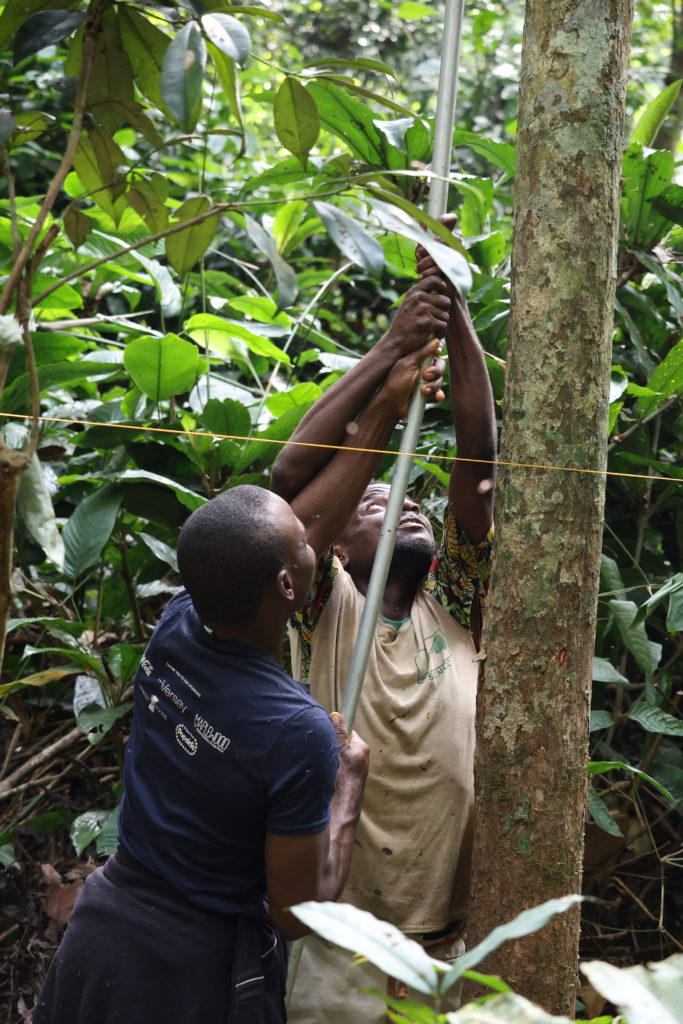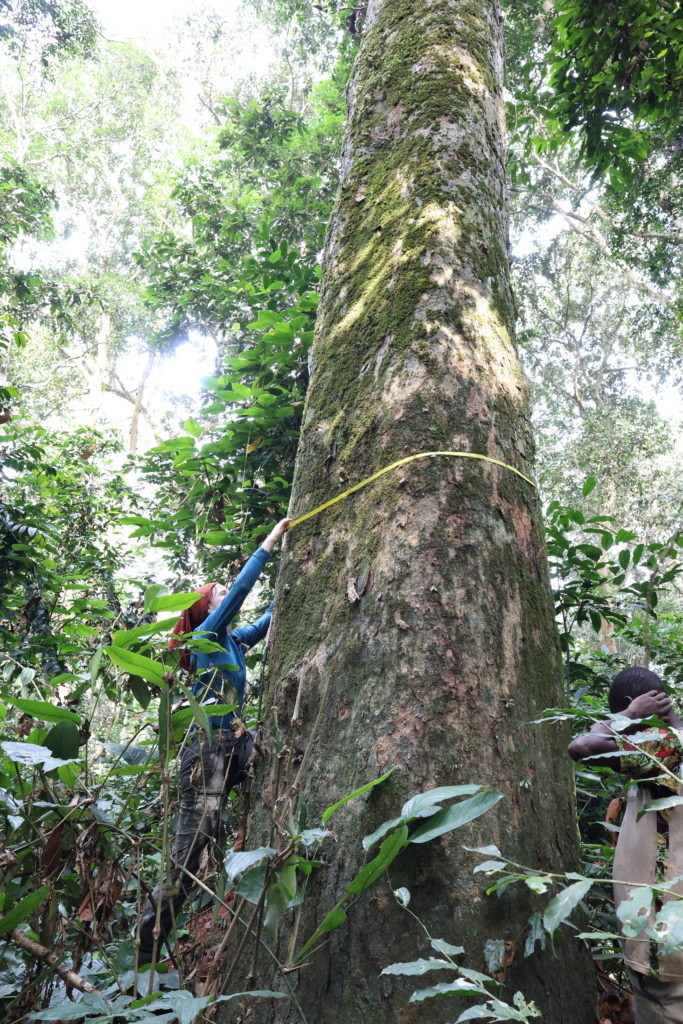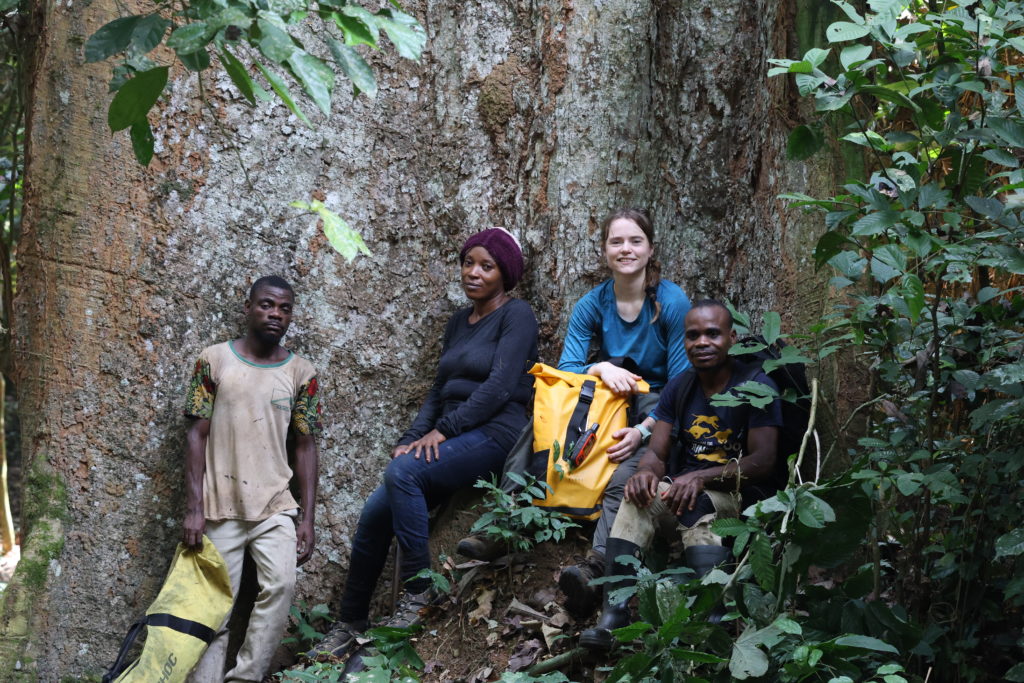
Deep in the forests of the Congo Basin there is a species of tree, Gilbertiodendron dewevrei, which is doing something truly remarkable. In these hotspots of biodiversity, where every tree is typically a different species to its neighbour, this tree species forms almost pure stands. In these forest stands, up to 90% of the trees reaching the canopy are Gilbertiodendron dewevrei. The local name for this tree is bemba, and the forests it creates are truly beautiful.

Monodominant Gilbertiodendron dewevrei (“bemba”) forest
The unusual nature of this tree species has led to lots of scientific interest in it. For years we have been asking why the bemba tree is able to dominate in such a diverse system. The most recent findings suggest that it is a combination of traits possessed by this tree which combine to give it a competitive advantage over the other trees trying to grow around it. For example, the bemba trees form a dense canopy which blocks out the light from the understory, making it difficult for lots of seedlings to grow. However, bemba seedlings can survive and thrive under a wide range of light conditions, and so do well in this shaded environment 2. They also have associations with mycorrhizal fungi, which help them to gain nutrients from the soil. This means they do well on relatively nutrient poor soils, and can outcompete other tree species 2.
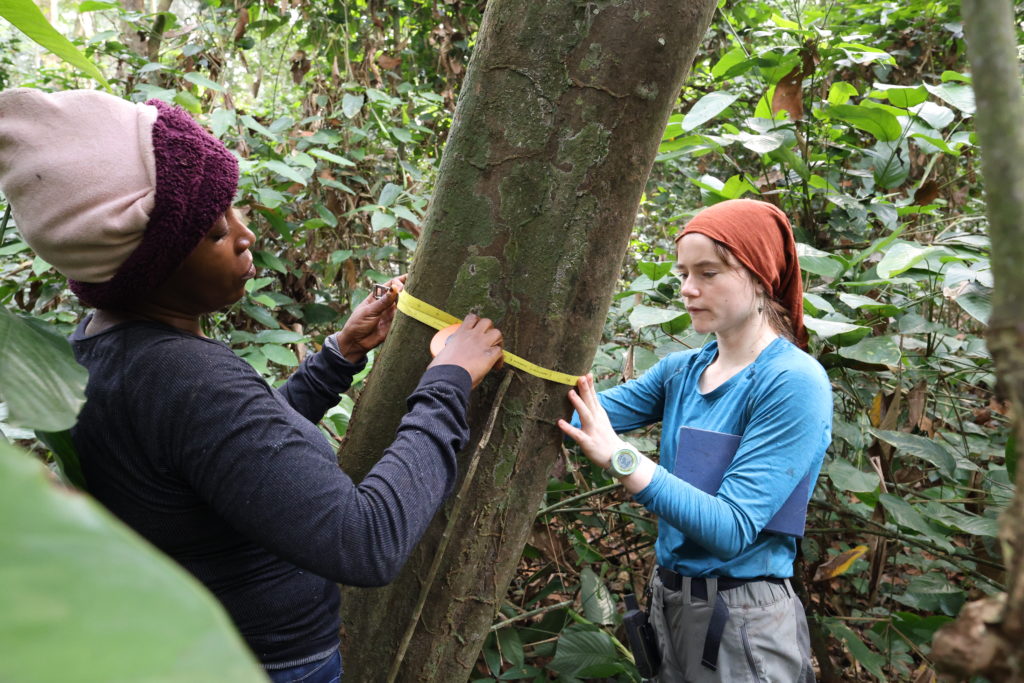
Lettycia and Ellen measuring trees in forest plots
While there has been lots of interest into how bemba trees can dominate forest stands, there hasn’t been a huge amount of research on these forests as a whole, and the biodiversity they contain. So far, they have largely been ignored within conservation policy because of their perceived lower species diversity. People think, oh that forest is mostly made up of one species of tree. It can’t be important for biodiversity. But this is not the case.
In a new paper that has just been published in the Journal Plant Ecology and Evolution, we show that this forest type is an important habitat for a wide range of plant species. 56 species of vascular plant have been identified that are uniquely associated with the bemba forests – being found there significantly more frequently than in mixed species forest. These cover 20 families of vascular plants, and a wide variety of plant life forms from trees and shrubs, to herbs and climbers. We show that conservation of these forests is important, for protecting the unique plant life they contain.
Left: Henri and Kuru using clipper poles to cut the leaves from a tree for identification. Right: Ellen and Kuru measuring the diameter of a large bemba tree.
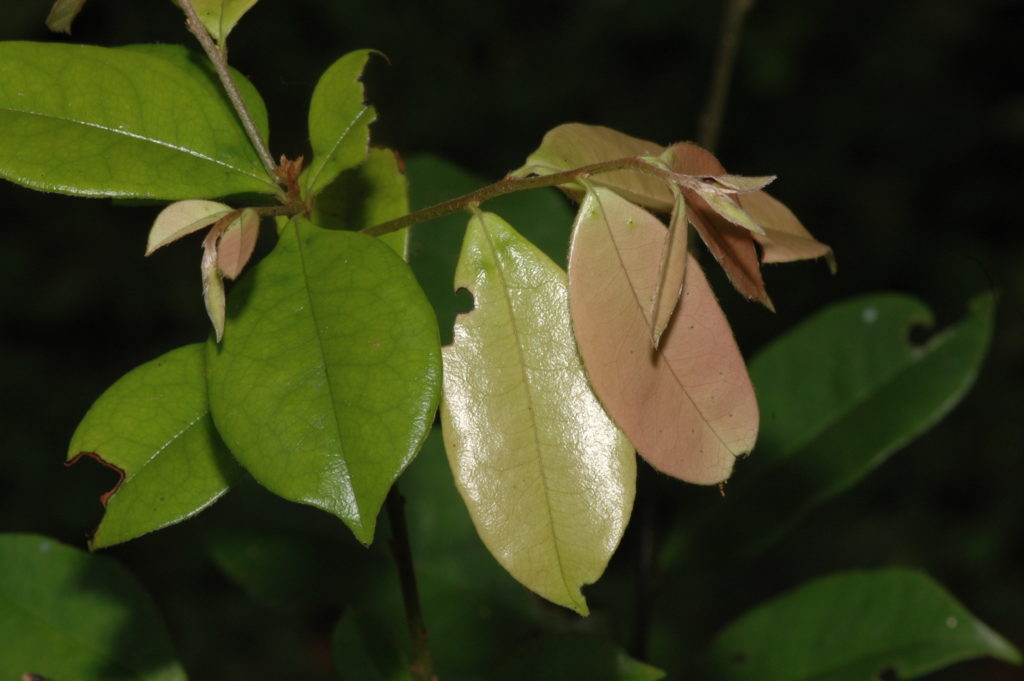
Diospyros ferrea. A tree that is rare within the Sangha Trinational, but is associated with bemba forest.
This work was carried out in the Sangha Trinational, a network of protect areas in Cameroon, Central African Republic, and the Republic of Congo. The research was unusual as it used both data from forest plots (inventories of marked out areas of forest, where every tree over a certain size is identified and measured), and from herbarium specimen data. Using the herbarium specimen data allowed us to look across all species of vascular plant, not just trees, and to move away from the purely tree-focused approach for measuring biodiversity that is often present in tropical forest research. Plant collectors will preferentially collect rare species, so using the herbarium specimen data also allows us to identify rarer tree species that are sometimes not picked up in plot data.
Ellen working with herbarium specimens.
This new paper also looked at the structural attributes of bemba forests, finding that they may actually store more carbon than mixed species forest, partly because bemba is such a long-living tree with a high wood density. This means that not only are these remarkable forests important for supporting biodiversity of plants, animals and fungi, but they can also play a significant role in sequestering carbon from our atmosphere.
References
- Heimpel E, Ahrends A, Dexter KG, Hall JS, Mamboueni J, Medjibe VP, Morgan D, Sanz C, Harris DJ (2024) Floristic and structural distinctness of monodominant Gilbertiodendron dewevrei forest in the western Congo Basin. Plant Ecology and Evolution 157(1): 55-74. https://doi.org/10.5091/plecevo.111539
- Hall JS, Harris DJ, Saltonstall K, Medjibe V de P, Ashton MS, Turner BL (2020) Resource acquisition strategies facilitate Gilbertiodendron dewevrei monodominance in African lowland forests. Journal of Ecology 108: 433–448. https://doi.org/10.1111/1365-2745.13278

